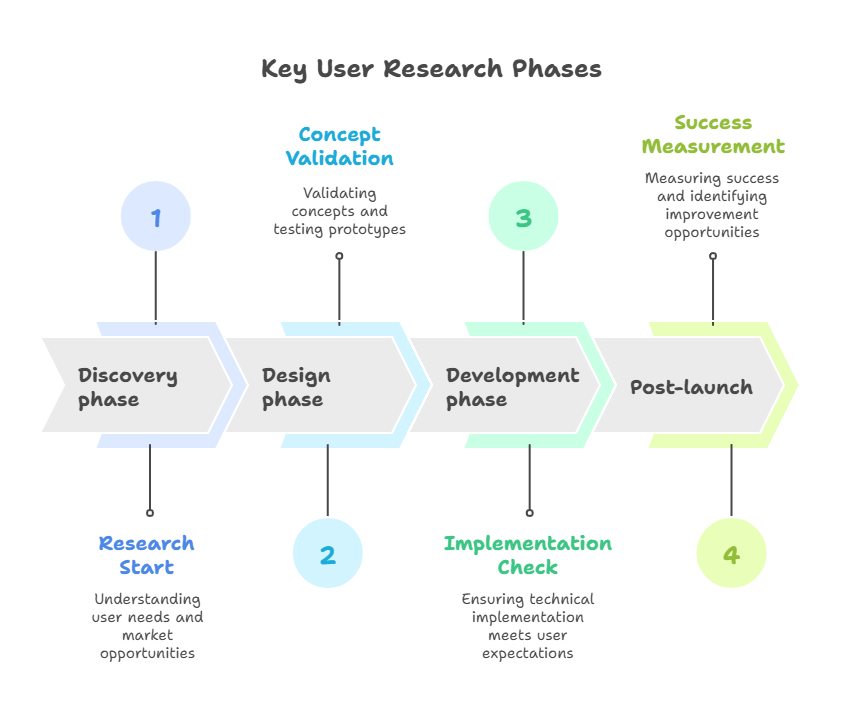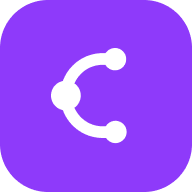Why User Research Matters in Product Design
Discover how user research transforms product design by aligning solutions with real user needs, reducing risks, and driving business success through evidence-based decisions.
Why User Research is Non-Negotiable in Product Design
User research is the systematic study of target users and their requirements to add context and insight to the design process. As Sinéad Davis Cochrane, UX Manager at Workday explains, "UX research represents insights gathered directly from users and customers that helps you make product decisions at every stage of the development process." This foundational practice transforms guesswork into evidence-based design, ensuring products solve real problems for real people.
The Core Benefits of User Research
Reduces Business Risk and Costs
Building products without user research is like navigating without a map—you might eventually reach your destination, but the journey will be costly and inefficient. Research identifies potential issues early, when changes are cheaper to implement. Companies that skip this crucial step often waste resources developing features users don't need or want, leading to expensive post-launch fixes and redesigns.
Creates User-Centered Solutions
User research ensures products are designed for people, not just technical requirements. As the Interaction Design Foundation notes, research "helps place people at the center of your design process and your products." This human-centered approach leads to higher adoption rates, increased customer satisfaction, and stronger brand loyalty.
Informs Strategic Decisions
Research provides the data needed to make informed product decisions rather than relying on assumptions or executive opinions. The UX Design Institute emphasizes that user research is "an integral part of the overall process" that guides everything from feature prioritization to interface design choices.
When to Conduct User Research
User research isn't a one-time activity but should be integrated throughout the product lifecycle. Maze recommends that research "should happen continuously, throughout the product lifecycle—so whether you're building new products or iterating on existing ones, every decision is informed by user insights."

Key research phases include:
- Discovery phase: Understanding user needs and market opportunities
- Design phase: Validating concepts and testing prototypes
- Development phase: Ensuring technical implementation meets user expectations
- Post-launch: Measuring success and identifying improvement opportunities
Essential User Research Methods
Qualitative Methods
- User interviews: Deep conversations to understand motivations and pain points
- Contextual inquiry: Observing users in their natural environment
- Usability testing: Watching users interact with your product to identify friction points
Quantitative Methods
- Surveys: Gathering data from larger sample sizes
- Analytics review: Analyzing usage patterns and behavior data
- A/B testing: Comparing different design approaches to measure performance
Overcoming Common Research Challenges
Many organizations struggle with securing time and resources for user research. The UX Design Institute acknowledges that "in organisations where UX maturity is low, UX designers can face resistance when it comes to getting the time and resources they need to conduct user research."
To overcome this:
- Start with lightweight research methods that deliver quick insights
- Share compelling research findings that demonstrate business value
- Build research into existing workflows rather than treating it as an extra step
- Use tools like ClipMind to organize and visualize research findings efficiently
Making Research Actionable
The ultimate goal of user research is to drive better product decisions. Toptal emphasizes that "the purpose and importance of user research is to better align user needs with products and services being designed." To ensure your research creates impact:
- Synthesize findings into clear, actionable insights
- Create user personas and journey maps that teams can reference
- Establish a central repository for research findings
- Connect research insights directly to design recommendations
Visualizing Your Research Strategy
Organizing user research findings can be challenging, especially when working with complex qualitative data. Consider using visual tools like mind maps to structure your insights and identify patterns. ClipMind's free AI tools can help you transform raw research data into structured frameworks that inform your design decisions.
User research isn't just a nice-to-have—it's the foundation of successful product design. By understanding your users deeply and continuously, you create products that people love to use while minimizing business risk and maximizing return on investment.
 ClipMind
ClipMind